I fancied a walk in the woods this morning, so I followed the route of a long gone mineral narrow gauge railway from Newbridge Quarry in Pickering to Saintoft. There is nothing left of the original railway, however a few odds and ends along the way of interest, there is also a good little write up on the Industrial Railway Society webpage, an abridged version which I have put here:
General Refractories Ltd. operated a two foot gauge tramway system at their Newbridge Works, near Pickering in North Yorkshire. Originally built in 1919 by the Pickering Sand Co. Ltd., the tramway ran for a distance of 2½ miles and served sand quarries at the northern edge of Gundale Wood, and at Saintoft. The quarries at Saintoft were served by separate branches from a junction just north of Queens Plantation. At first most of the sandstone was sold uncrushed, but towards the middle of the nineteen-twenties the Company decided to use some of the mineral for manufacturing bricks and a works was erected at Newbridge. (of which the kilns still exist) In its early days the output of bricks was fairly constant, but a gradual decline towards the years of the depression showed that such a project had not been profitable, mainly because sand bricks were not as hard wearing as clay bricks and by 1932 production had ceased. The brickmaking part of the works was dismantled, except for the tipping dock and crushing plant which are still in use today.
Normally, between eighty and a hundred tons of sandstone were conveyed down the tramway daily, necessitating two locomotives in regular use. As there were no passing places on the tramway only one locomotive at a time was able to complete a full journey - Saintoft to Newbridge (full), Newbridge to Saintoft (empty) - during which time the second train was being filled up at the quarry. Some seven tubs would arrive at Newbridge at roughly hourly intervals throughout the day.
On 13th October 1961 quarrying was suspended and the tramway was lifted being replaced by a roadway constructed over a similar route.
This was a lovely little walk, and part of the route is now used as a rifle range, on my way back a gentleman with a red flag used his radio so that the men with guns would safely let me past, earlier in the day I took a few photos of their target mechanism, very interesting it is too!
The route of the railway:
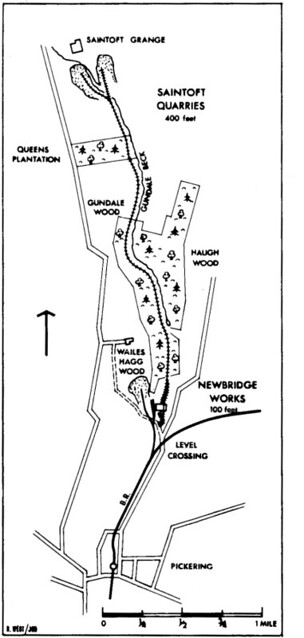
Old photo of a train exiting the woods into the quarry:
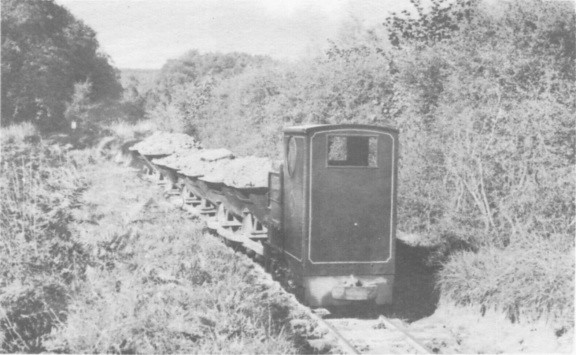
Sort of where it is all now:
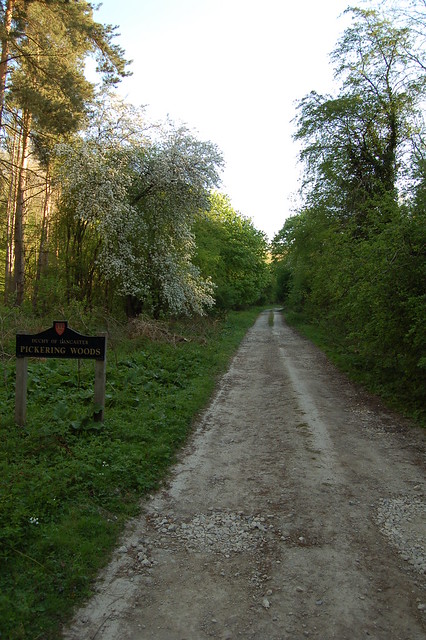
Brick kilns still in existance:
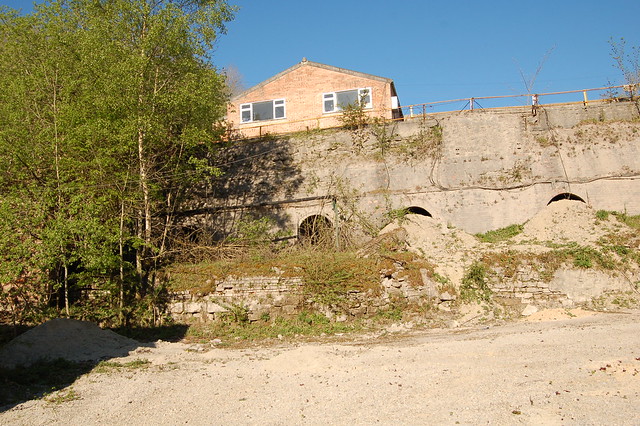
The railway veered to the left past Haugh wood on the right:
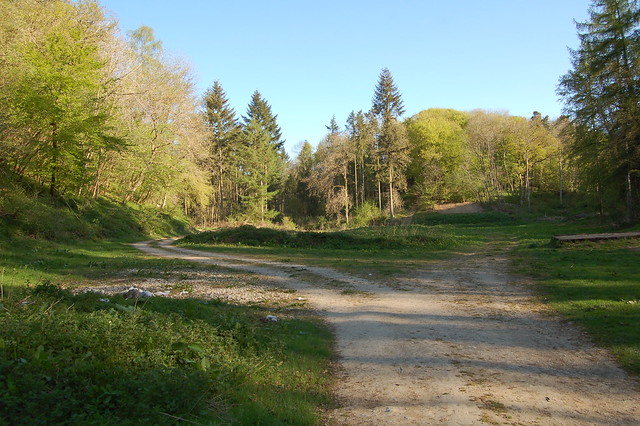
The local gun club has a rifle range on part of the route, this is the mechanism for putting up targets, I wonder if the railway sleepr seats in the hut are original to the railway?
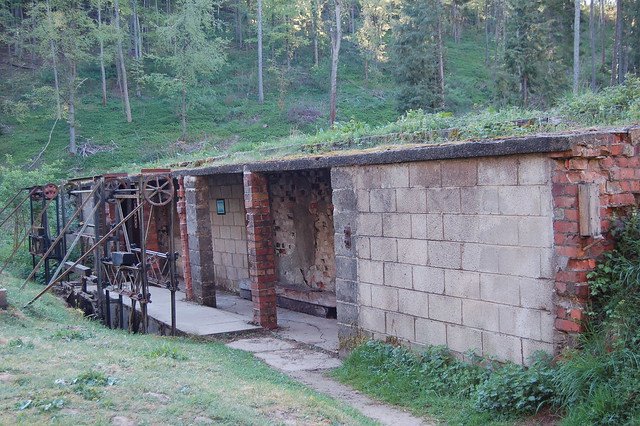
The railway climbs up to Saintoft quarry, this is a shot looking back down the gradual incline:
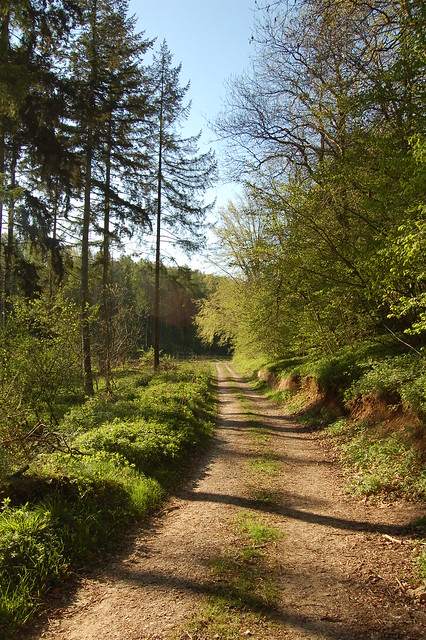
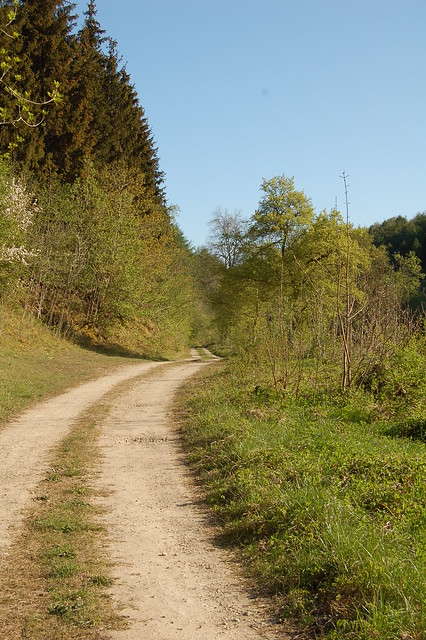
The junction at Saintoft as it was then:
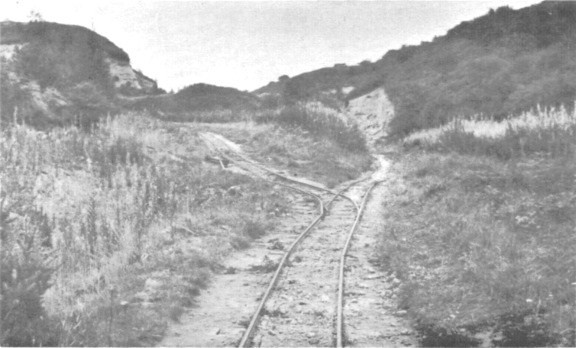
The junction at Saintoft as it is now
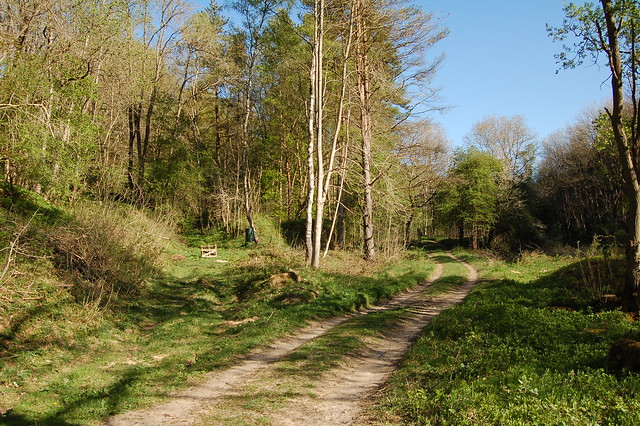
In the quarry, perhaps the last remaining bit of rail used as a barrier?
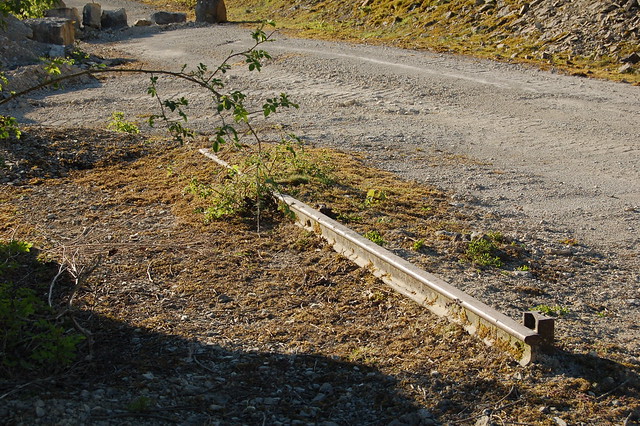
Cheers
Ian
General Refractories Ltd. operated a two foot gauge tramway system at their Newbridge Works, near Pickering in North Yorkshire. Originally built in 1919 by the Pickering Sand Co. Ltd., the tramway ran for a distance of 2½ miles and served sand quarries at the northern edge of Gundale Wood, and at Saintoft. The quarries at Saintoft were served by separate branches from a junction just north of Queens Plantation. At first most of the sandstone was sold uncrushed, but towards the middle of the nineteen-twenties the Company decided to use some of the mineral for manufacturing bricks and a works was erected at Newbridge. (of which the kilns still exist) In its early days the output of bricks was fairly constant, but a gradual decline towards the years of the depression showed that such a project had not been profitable, mainly because sand bricks were not as hard wearing as clay bricks and by 1932 production had ceased. The brickmaking part of the works was dismantled, except for the tipping dock and crushing plant which are still in use today.
Normally, between eighty and a hundred tons of sandstone were conveyed down the tramway daily, necessitating two locomotives in regular use. As there were no passing places on the tramway only one locomotive at a time was able to complete a full journey - Saintoft to Newbridge (full), Newbridge to Saintoft (empty) - during which time the second train was being filled up at the quarry. Some seven tubs would arrive at Newbridge at roughly hourly intervals throughout the day.
On 13th October 1961 quarrying was suspended and the tramway was lifted being replaced by a roadway constructed over a similar route.
This was a lovely little walk, and part of the route is now used as a rifle range, on my way back a gentleman with a red flag used his radio so that the men with guns would safely let me past, earlier in the day I took a few photos of their target mechanism, very interesting it is too!
The route of the railway:

Old photo of a train exiting the woods into the quarry:

Sort of where it is all now:

Brick kilns still in existance:

The railway veered to the left past Haugh wood on the right:

The local gun club has a rifle range on part of the route, this is the mechanism for putting up targets, I wonder if the railway sleepr seats in the hut are original to the railway?

The railway climbs up to Saintoft quarry, this is a shot looking back down the gradual incline:


The junction at Saintoft as it was then:

The junction at Saintoft as it is now

In the quarry, perhaps the last remaining bit of rail used as a barrier?

Cheers
Ian



